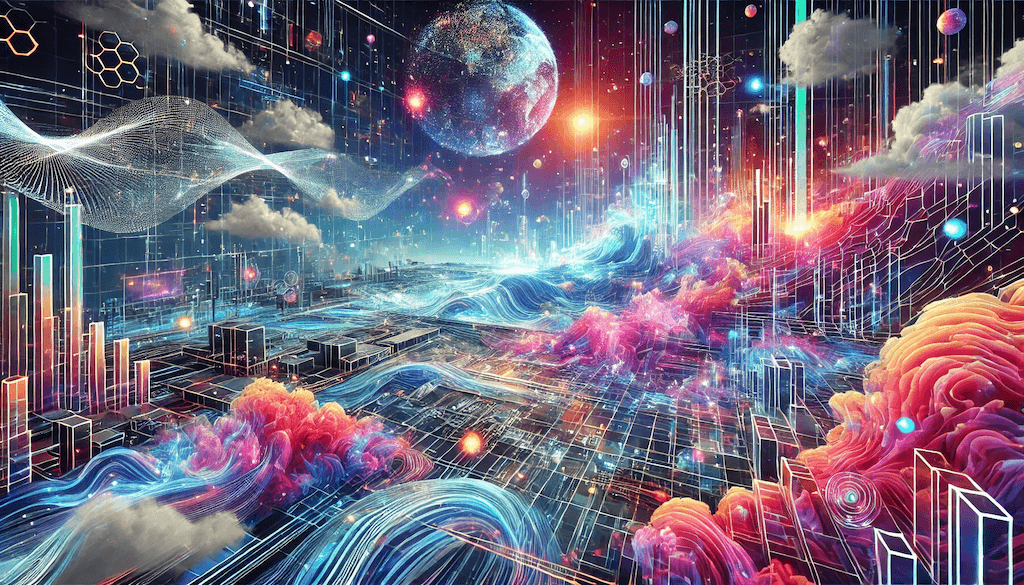Why Generative AI is the Next Big Thing in Technology

Generative AI is taking the tech world by storm, and it’s easy to see why. This cutting-edge technology, which involves using AI to generate new content, is pushing the boundaries of what’s possible. From creating stunning pieces of art and composing music to writing code and even producing entire video games, generative AI is poised to revolutionize a myriad of industries. In this blog post, we’ll dive into what generative AI is, explore its exciting applications, and discuss why it’s considered the next big thing in technology.
What is Generative AI?
Generative AI refers to a category of artificial intelligence algorithms that can create new content. Unlike traditional AI, which is designed to recognize patterns and make decisions based on existing data, generative AI can produce entirely new data that mimics the patterns it has learned. This includes generating text, images, music, and even complex designs.
How It Works
Generative AI models, such as Generative Adversarial Networks (GANs) and Variational Autoencoders (VAEs), consist of two parts: a generator and a discriminator. The generator creates new data, while the discriminator evaluates the data’s authenticity. Through this adversarial process, the models improve over time, producing increasingly realistic and high-quality outputs.
Transformative Applications of Generative AI
-
Art and Design
- Digital Art: Artists are using generative AI to create stunning digital artworks that push the boundaries of creativity. AI tools like DALL-E and DeepArt have gained popularity for their ability to generate unique and intricate images.
- Graphic Design: Generative AI can assist designers by creating design elements, layouts, and even entire branding concepts, streamlining the creative process.
-
Music Composition
- AI Composers: Tools like OpenAI’s MuseNet and Google’s Magenta can compose original pieces of music in various styles, from classical to jazz. Musicians are collaborating with AI to explore new musical horizons.
- Sound Design: Generative AI is also being used to create sound effects and ambient sounds for video games, films, and other media.
-
Content Creation
- Writing and Journalism: AI models like GPT-4 are capable of generating human-like text, making them valuable for content creation, journalism, and even writing code.
- Marketing and Advertising: Generative AI can create personalized marketing content, slogans, and product descriptions, enhancing customer engagement and experience.
-
Gaming and Virtual Worlds
- Game Development: Generative AI is revolutionizing game development by creating characters, levels, and storylines, reducing development time and costs.
- Virtual Reality: AI can generate immersive virtual environments, enhancing the realism and interactivity of VR experiences.
-
Healthcare and Medicine
- Drug Discovery: Generative AI can design new molecules and predict their behavior, accelerating the drug discovery process.
- Medical Imaging: AI can generate synthetic medical images to augment training datasets, improving diagnostic tools and procedures.
Why Generative AI is the Future
Generative AI is more than just a novel technology; it’s a transformative force that’s reshaping industries and creating new possibilities. Here are a few reasons why generative AI is considered the future of technology:
-
Unleashing Creativity: Generative AI augments human creativity by providing new tools and methods for artistic and design endeavors. It opens up new avenues for creative expression and innovation.
-
Efficiency and Automation: By automating repetitive and time-consuming tasks, generative AI increases efficiency and allows professionals to focus on higher-level, strategic work.
-
Personalization: Generative AI can create highly personalized content, enhancing user experiences in marketing, entertainment, and more.
-
Accelerating Innovation: From drug discovery to game development, generative AI accelerates innovation by enabling rapid prototyping and experimentation.
-
Democratizing Technology: Generative AI tools are becoming more accessible, allowing smaller companies and individual creators to leverage cutting-edge technology without significant investments.
Challenges and Considerations
While the potential of generative AI is immense, there are also challenges and ethical considerations to address:
- Quality Control: Ensuring the quality and authenticity of AI-generated content is crucial, especially in fields like journalism and healthcare.
- Ethical Concerns: The use of generative AI raises ethical questions about authorship, copyright, and the potential for misuse.
- Bias and Fairness: AI models can inadvertently perpetuate biases present in their training data. It’s essential to develop methods to mitigate bias and ensure fairness.
Conclusion
Generative AI is undeniably one of the most exciting advancements in technology today. Its ability to create new content and transform industries makes it a powerful tool for innovation and creativity. As we continue to explore its potential, it’s essential to address the challenges and ethical considerations to harness its full benefits responsibly.
Stay tuned to hersoncruz.com for more insights and updates on the latest in generative AI and other technological advancements. Let’s navigate this exciting future together!